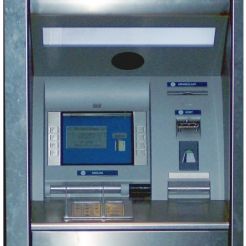The document, containing recommendations regarding standards of customer care applicable to persons with disabilities, was subsequently distributed among banks in Poland. The above was the response of the Polish Bank Association to the Foundation’s question about whether the Automatic Teller Machines (ATMs) and payment terminals used by bank customers in Poland meet the needs of visually impaired persons.
The Best Practices presented a number of measures that can be used to improve the accessibility of ATMs for visually impaired persons: installing headphone sockets which would enable impaired customers to hear messages displayed on the device’s screen; fitting Braille fonts on keypads; an audible acknowledgement of every key press in the form of a beep; and the provision of a high-contrast version of on-screen messages.
In accordance wit the Association’s response suggests that more and more ATMs have been equipped with such features with some banks already making all their machines fully accessible for visually impaired customers. Still, the PBA does not have any statistics on the number of accessible ATMs.
The Association emphasised that banks were constantly improving standards of customer services for persons with disabilities. A range of accessibility measures have been put in place: customers with disabilities are given priority service, and banks designate separate rooms and adjust communication methods to best suit the needs of this category of clients. The reply also stated that banks were constantly aiming to improve the accessibility of their physical premises as well as that of their online banking services.
Moreover, the PBA appointed a special expert team tasked with developing another edition of the Best Practices in the Provision of Banking Services for Persons with Disabilities. The team is expected to partner with organisations representing persons with disabilities.





